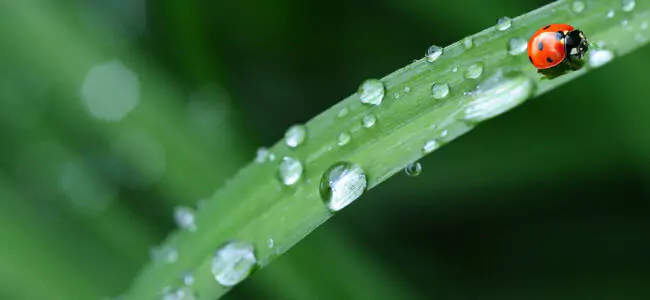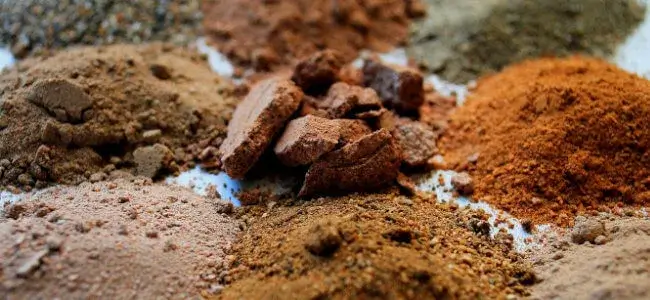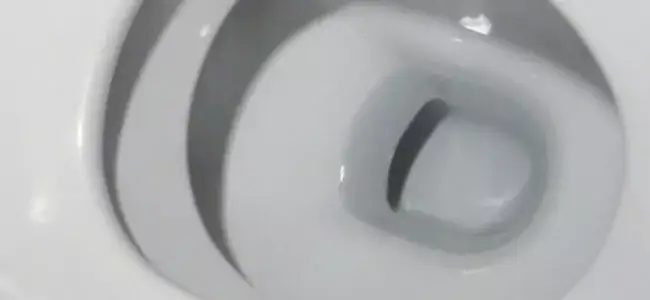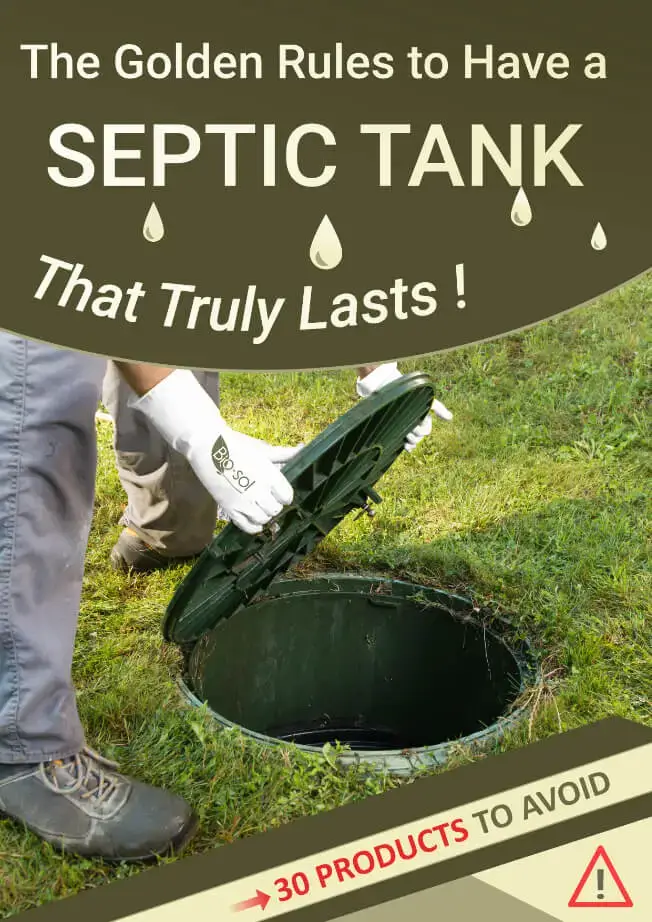The water cycle and your septic system

TABLE OF CONTENTS
If your house is not connected to the municipal sewer system, it is most likely connected to a septic system, which is an on-site wastewater management system. Wastewater leaves your house via the plumbing into the septic tank where it undergoes physical and biological treatment processes. The physical process entails the settling down of suspended solids at the bottom of the tank to form the sludge layer while the fats, oils and grease float on top to form the scum layer. The biological process entails the liquifying of organic waste by the bacteria with the help of enzymes. This liquified waste is then sent to the drainfield area where it is treated before it percolates into the soil after going through filtration in a gravel layer in the drainfield. From here, the water works its way to the groundwater through a natural process.
Natural water cycle
The water is always in movement through what is referred to as a natural water cycle. This movement happens continuously on the earth as well as above and beneath it. For this cycle to continue, water changes its states in between the ice, vapor, and liquid. This cycle has been working for billions of years and plants and animals rely on this cycle for sustenance. The natural water cycle goes through the following stages:
Evaporation – this is where water molecules break their bonds thanks to energy from the sun and thus change into water vapor. This vapor rises back into the atmosphere and other components like salt and metals are left behind
Condensation – this is when the water vapor cools thereby changing from vapor back into water droplets. These tiny water droplets usually join to form the clouds
Precipitation – when the condensation in the atmosphere is too much, the water falls back on earth and this is what is referred to as precipitation. Depending on the prevailing temperatures, precipitation can be in liquid form (rain) or in solid form (snow and hail).
Percolation – this refers to the process by which some of the water infiltrates into the groundwater via the soil
Run-off – water that flows on the surface and collects in rivers, creeks, and oceans can be referred to as run-off water
Transpiration – this is the water that returns to the atmosphere as it evaporates from plants. Plants typically transpire through their leaves.
Water vapor is the main form of moisture in the atmosphere. The storage of water vapor in the atmosphere might be comparatively small but it plays a vital role in supplying dew, fog, frost, clouds, and precipitation. Condensation is the process by which water vapor changes from the vapor state into a liquid state. This typically happens when the air has more vapor than it can hold at the prevailing temperature. This can be caused by cooling or by mixing of air that has different temperatures. Through this process of condensation, water vapor from the atmosphere is released to form precipitation. Precipitation falls on the ground and gets distributed in a number of ways. Some of it evaporates and returns to the atmosphere, some is intercepted by plants and then evaporates from the leaves, some flows back into the sea, while some percolates into the soil. Through infiltration. Most of the groundwater originates from the water that percolates through the soil.
Urban water cycle
The urban water cycle refers to manmade methods that bring clean water to homes and offices. The urban water cycle is more complex than just opening the water tap and clean water gushing out. There are 8 distinct stages of the urban water cycle. These are;
Source – this is the origin of the water. In most cases, it comes from surface water like rivers, lakes, and reservoirs. Groundwater could also be pumped up for domestic use via wells.
Treatment – water gotten from open bodies contains microorganisms. It is therefore expedient to treat such water before using it in the home. Treatment of water involves many processes including chemical coagulation, disinfection, filtration, etc.
Distribution – once the water has been treated and disinfected sufficiently, it is sent out through a pressurized system to the homes and other areas where it is needed. A disinfectant residual is usually maintained at the different parts of the system.
Storage – after distribution, water is typically stored in water towers before it is put to use. these towers rely on gravity to provide water when and where it is needed.
Use – this is the phase where the stored water is accessed via the faucets and put to use e.g. cooking, brushing teeth, drinking, showering, washing clothes, etc.
Wastewater collection – wastewater from the house leaves via plumbing and is conveyed by gravity to either a sewer system or an onsite wastewater system.
Wastewater treatment – after the wastewater has been collected, it needs to be treated before it is reintroduced into the natural water cycle. Wastewater treatment is usually done by various physical, biological and chemical processes.
Discharge – after treating the effluent from the house, it is sent back into the environment and the natural cycle of water continues.
How septic systems fit into the water cycle
In a natural water cycle, water from earth evaporates and forms clouds in the atmosphere. It then rains and sends water back to the streams, lakes, reservoirs as well as groundwater. In some cases, municipal systems will get water from lakes, streams, and reservoirs and distribute it for domestic use but after treating it. But not every home is connected to the municipal grid and so they have private systems (mostly wells). In private systems, water from rain seeps through the soil and percolates past rocks and other materials before getting to the groundwater. As water passes through these different layers of soil, it gets filtered and purified naturally and by the time it reaches the groundwater, it should be safe for drinking.
It is vital for every homeowner to understand that their septic system has an impact on both the urban as well as the natural water cycle. Onsite wastewater treatment is typically made of the septic tank, a leachfield and the soil around it. When working as it should, the system treats the water and removes any pathogens before it reaches groundwater. However, if the system is not properly maintained, it can fail resulting in the contamination of groundwater. Here are some of the ways that a septic system can cause groundwater pollution.
Bacteria and viruses in groundwater
Research shows that the biggest threat to groundwater by the septic tanks is the movement of pathogenic viruses and bacteria from the septic tank into the groundwater. All viruses and most bacteria are small enough to easily move through soil pores. This means that if they are not removed from the effluent, they can easily leach into the groundwater. Adsorption usually slows down the movement of these pathogens. Adsorption is the process by which organisms get attached to soil particles through chemical bonding. However, the adsorbed bacteria and viruses are not permanently joined to the soils and when water starts to percolate quickly, e.g. in rainy seasons, they can get resuspended. In most cases, the environment in the soil will be too hostile for the bacteria and viruses but this can vary depending on the prevailing conditions. For instance, bacteria and viruses can survive for longer in anaerobic and saturated conditions in the soil under the drain field. This usually happens when you have a high water table.
Nitrates in groundwater
Nitrates from the septic tank can also pollute the groundwater. When this happens, the nitrates in drinking water can cause methemoglobinemia, which is a condition that prevents the uptake of oxygen by the blood. Infants are usually more susceptible to this condition. Experts advise that the nitrates composition in water shouldn’t exceed 10 mg/L. Nitrate is a byproduct of the process of breaking down organic waste by bacteria in the septic tank. Nitrate is highly soluble in water and it can therefore easily get transported to the groundwater. Denitrification is the most effective way of removing these nitrates in the effluent. Denitrification is the process by which nitrates are converted to nitrogen (gaseous form) by bacteria. Denitrification usually happens under anaerobic conditions in the septic tank. It is important to ensure the bacteria in the septic tank are healthy in order to ensure denitrification continues efficiently. Adding biological additives can help replenish anaerobic bacteria in the septic tank to ensure nitrates don’t leave the tank before being converted into nitrogen.
Phosphates in lakes
Eutrophication of lake water is one of the biggest problems with phosphate pollution. Eutrophication is the phenomena of nutrient enrichment and it results in excessive growth of algae and other aquatic plants which eventually depletes the lake of oxygen. Phosphate pollution is not as common as nitrate pollution because phosphate adsorbs tightly to the soil particles and so the chances of it moving to the groundwater are not as high. However, phosphate pollution is still a possibility especially with septic systems that aren’t well maintained. Phosphate pollution is common in sandy soils because they have very limited adsorption quality. Old and heavily loaded septic systems and high-water tables are some other causative factors. Discharge of raw sewage from a failed septic system can also cause eutrophication of lakes.
Conclusion
As a septic system owner, you must be conscious that your system can have adverse effects on the natural water cycle. The wastewater from your septic tank does not just end in the septic tank. on the contrary, it eventually percolates into the soil and finds its way back in the natural water cycle. If you neglect your septic system, it will pollute the groundwater which will ultimately affect the quality of water in the cycle and cause many issues. For instance, eutrophication of lakes drastically reduces their recreational quality. Pollution of groundwater can also result in the spread of waterborne diseases. To avoid all these, it is important to maintain your septic system well by watching the products you use, using biological additives, and pumping it regularly as per your local regulations.
OUR LATEST BLOG POSTS

Strange facts about septic systems
If you are a septic system owner, you might have heard all manner of myths. For instance, there is a common myth that throwing a dead cat in the septic tank can help rejuvenate bacteria and thereby make the septic tank more effective. But is this even true? In this article, we will not only answer that […]

Soils types and their impact on septic systems
SOILS TYPES AND THEIR IMPACT ON SEPTIC SYSTEMS However good your septic system is, it depends on the right soil type to complete the process of purifying the wastewater from your home. The soil type in the drainfield area will determine how well the effluent is filtered and if the water that is sent back to the […]

Avoid flushing these if you have a septic tank
Most homeowners wrongfully assume that their toilet can serve as some sort of garbage disposal. As a result, they end up flushing all manner of things in the toilets. Some of the things that are flushed down the toilet are actually innocent mistakes because homeowners think that is the right way to dispose of the products while in other cases, it is just a don’t care attitude. Whichever the case may be, flushing some of these things can result in septic system failure and it could cost you a fortune. We have rounded up some of the commonly-flushed products that you should never flush if you have a septic system.
PERFECT! I WOULD NEED...
Discover which products are the best for your needs!You can contact us at 1-800-378-6132 (toll free) or click on the following button to access our free online evaluation.
GET A QUOTE ONLINELog in to your account
Whoops! It happens sometimes...
CREATE A NEW ACCOUNT
CONGRATS!
You are now registered and ready to go. You can add and change any of your information on your client profile.
Unfortunately, we do not ship our products to the USA at the moment.
But, if you live in the United States and would like to order them, please fill in the form below. You will then be notified as soon as they are available in your country.
Thank you for your understanding!
Malheureusement, nous n’expédions pas nos produits en France pour le moment.
Mais, si vous êtes résident français et aimeriez les commander, remplissez s’il vous plaît le formulaire ci-dessous. Nous pourrons ainsi vous aviser aussitôt qu’ils seront disponibles dans votre pays.
Merci de votre compréhension!

-
30 products to avoid
-
What to replace them with
-
And everything you should know about your septic system
DOWNLOAD THIS FREE EBOOK!
Which email address should we send it to?


